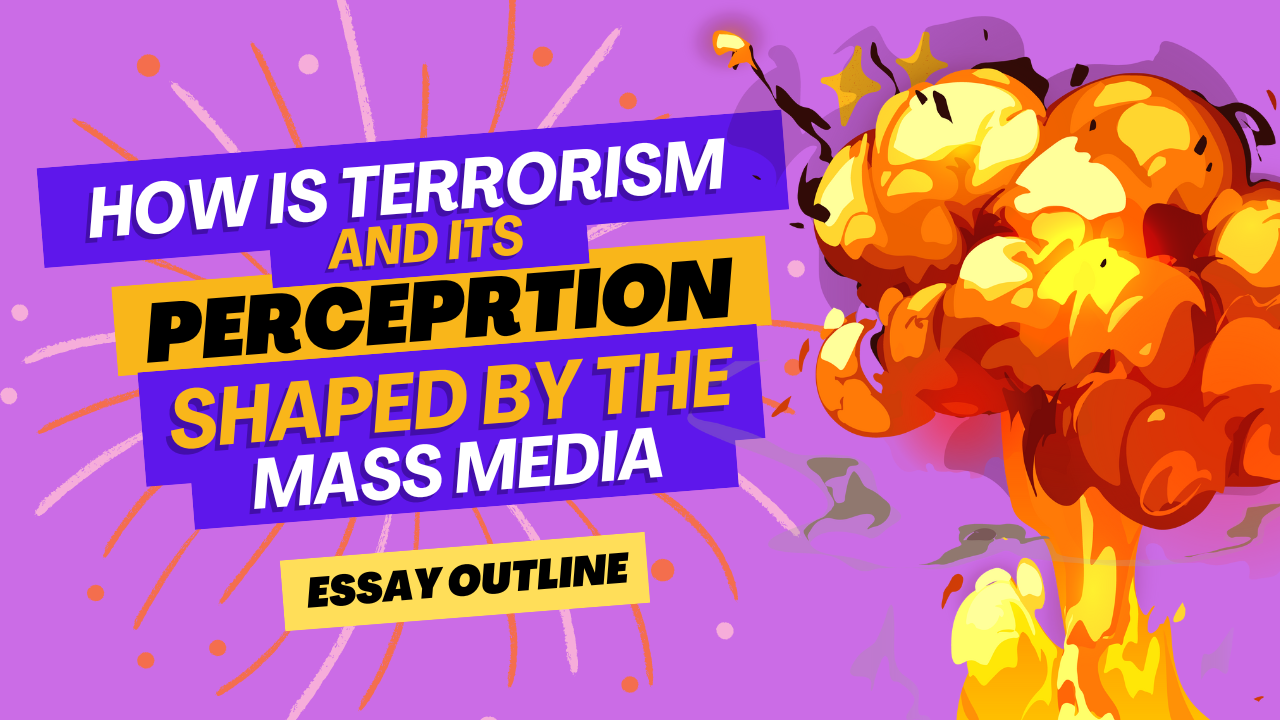HOW IS TERRORISM AND ITS PERCEPTION SHAPED BY THE MASS MEDIA
I. Introduction
A. Definition of terrorism:
The deliberate use of violence against civilians to achieve political, religious, or ideological goals.
B. Importance of media in shaping public perception:
The media acts as a primary source of information, influencing how people perceive and understand terrorism.
C. Thesis statement:
The mass media significantly influences the perception of terrorism through its portrayal, framing, and agenda-setting.
II. Historical Context of Media Coverage on Terrorism
A. Evolution of media’s role:
From traditional newspapers to the current 24-hour news cycle and social media platforms.
B. Impact of technological advancements:
For instance, the live broadcasting of 9/11 attacks globally transformed how people received and perceived acts of terrorism.
III. Media Portrayal of Terrorism
A. Sensationalism in reporting:
The coverage of terrorist incidents often focuses on dramatic aspects, amplifying fear. For instance, the constant replay of disturbing visuals from attacks can heighten anxiety.
B. Stereotyping and bias:
Media sometimes portray certain groups or regions in a biased light, associating them predominantly with terrorism. Example: Continuous linking of Islam with terrorism after attacks by extremist groups.
IV. Framing of Terrorism by the Media
A. Framing theory application:
Media presents terrorism through different lenses, affecting public understanding. Example: Portraying terrorists as ‘lone wolves’ or ‘foreign threats’ can shape how the audience perceives countermeasures.
B. Impact on public perception:
Depending on how terrorism is framed (religious, political, or ideological), the public might respond with fear, prejudice, or support for specific policies.
V. Agenda-Setting and Terrorism Coverage
A. Media’s role in setting the agenda:
Highlighting specific incidents over others shapes public priorities and government actions. Example: Extensive coverage of certain attacks may prompt policymakers to focus on counterterrorism measures in specific regions.
B. Agenda-setting theory and relevance:
The media’s selection and repetition of certain narratives influence what the public considers significant regarding terrorism.
VI. Examples of Media Influence on Perception of Terrorism
A. Case studies:
The coverage of the Boston Marathon bombing or the London Underground attacks and subsequent public responses demonstrate the influence of media framing on societal reactions.
B. Analysis of media framing:
Before and after media coverage of an incident, examining shifts in public perception and attitudes toward terrorism.
VII. Challenges and Ethical Considerations
A. Ethical responsibilities of the media:
Balancing the need for information with responsible reporting to prevent panic or prejudice.
B. Impact of biased reporting:
Instances where biased or inaccurate reporting worsened social divides or perpetuated stereotypes.
VIII. Counter-narratives and Responsible Media Practices
A. Importance of diverse perspectives:
Highlighting stories of resilience, community response, and diverse viewpoints to combat stereotyping.
B. Role of media literacy:
Educating the public to critically analyze media coverage to discern facts from sensationalism or bias.
C. Strategies for responsible reporting:
Encouraging balanced, factual reporting without amplifying fear or prejudice.
IX. Conclusion

